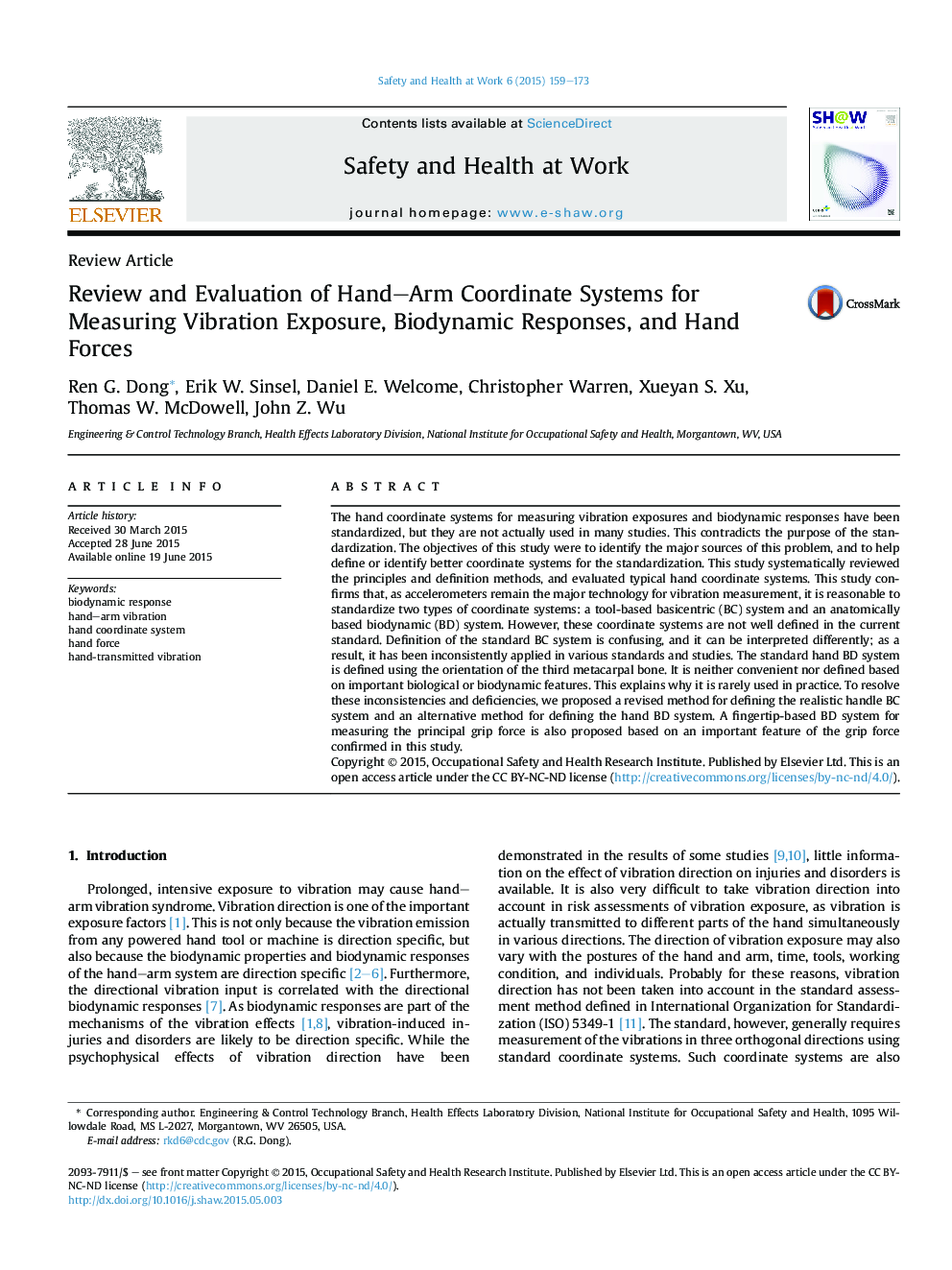| Article ID | Journal | Published Year | Pages | File Type |
|---|---|---|---|---|
| 1092073 | Safety and Health at Work | 2015 | 15 Pages |
The hand coordinate systems for measuring vibration exposures and biodynamic responses have been standardized, but they are not actually used in many studies. This contradicts the purpose of the standardization. The objectives of this study were to identify the major sources of this problem, and to help define or identify better coordinate systems for the standardization. This study systematically reviewed the principles and definition methods, and evaluated typical hand coordinate systems. This study confirms that, as accelerometers remain the major technology for vibration measurement, it is reasonable to standardize two types of coordinate systems: a tool-based basicentric (BC) system and an anatomically based biodynamic (BD) system. However, these coordinate systems are not well defined in the current standard. Definition of the standard BC system is confusing, and it can be interpreted differently; as a result, it has been inconsistently applied in various standards and studies. The standard hand BD system is defined using the orientation of the third metacarpal bone. It is neither convenient nor defined based on important biological or biodynamic features. This explains why it is rarely used in practice. To resolve these inconsistencies and deficiencies, we proposed a revised method for defining the realistic handle BC system and an alternative method for defining the hand BD system. A fingertip-based BD system for measuring the principal grip force is also proposed based on an important feature of the grip force confirmed in this study.
